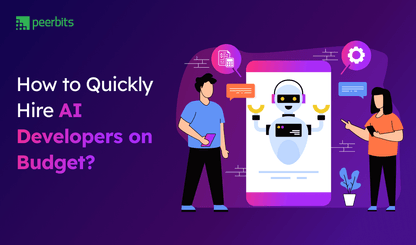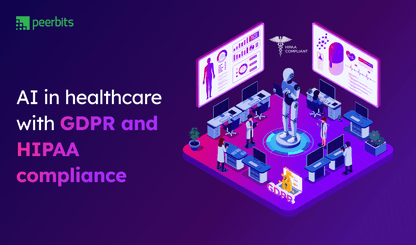Customers expect replies in seconds, support on every channel, and solutions without the “please hold” loop.
Scaling that kind of support with only human agents is quite hard. The cost grows fast, burnout kicks in, and churn quietly eats into the growth.
That’s where most businesses are left with only two choices—double the team or rethink the system.
Now the debate of AI chatbots vs human agents begins, rooted not only in saving money, but also in building support that actually works.
Based on the Gartner Digital Markets report, 92% of businesses plan to invest in AI-powered software. That includes customer support solutions, where the right AI system doesn’t replace humans; it works alongside them to reduce friction and improve satisfaction.
AI chatbots have also evolved beyond simple scripts nowadays.
With smart workflows, platform integration, and contextual training, they now assist in solving a wide range of customer queries.
But keeping a consistent support demands more than just implementing a chatbot tool. It takes well-planned AI chatbot development services customised to your business goals.
Let’s understand the difference between AI Chatbot vs Human Agents with respect to customer support churns and how they impact your business.
Short on time? Jump straight to when you should shift from human-led to AI-assisted chatbot support and find out how to make the change efficiently.
What is support churn & How it impacts businesses?
What does support churn mean in practical terms?
Support churn refers to the silent exit of customers who leave not because of pricing or product flaws, but because they didn’t get timely or helpful assistance.
It’s when unresolved issues, long wait times, or robotic responses push users to abandon your product or switch to competitors.
In practical terms, this can show up as low CSAT (Customer Satisfaction Score) or NPS (Net Promoter Score), both of which are key indicators of loyalty. When those numbers slip, churn creeps in and it becomes a retention problem hiding behind your support dashboard.
What causes support churn?
A few recurring patterns drive most churn issues in customer service:
-
Long wait times: Customers expect instant replies, not ticket queues that last hours.
-
Repeated queries: If users need to ask the same question more than once, trust erodes fast.
-
Agent burnout: When your human team is overworked, response quality dips — and customers feel that fatigue.
Without smart automation or escalation systems, these cracks widen quickly and start affecting revenue.
Signs your business is suffering from support churn
You might not notice support churn immediately, but its signals show up across metrics:
-
Return or refund spikes: Often triggered by unresolved issues.
-
Decline in repeat users: A drop in re-engagement points to unsatisfied experiences.
-
Support team keeps growing, but nothing improves: If you are hiring more agents yet outcomes remain flat, the system not the people might need fixing.
Next up, we’ll explore how AI chatbot support fits into this equation, what AI can and can't handle, and how it complements your existing team.
AI agents: What they solve and where they fall short
What are AI agents
AI agents, also called AI chatbots, are NLP-driven systems that go beyond keyword-matching. They understand user intent and are built to simulate real-time conversations. A modern Ai chatbot for customer services can connect with various tools, fetch answers from internal systems, and even trigger basic workflows.
What AI agents can do?
AI agents are great at handling high-volume, repetitive tasks that don’t need human thinking. They can:
- Pull data from backend systems like order status or account information
- Provide instant responses across web, mobile apps, WhatsApp, Messenger, and other platforms
- Assist customers anytime, reducing wait times and dependency on human agents
What AI agents can’t do?
That said, these bots still have limits. They can struggle with:
- Understanding emotional tone or vague, context-heavy queries
- Solving complex issues or edge cases without escalation
- Handling situations that need human empathy or decision-making
Can AI chatbots actually reduce churn?
Businesses losing customers due to slow support or repetitive query delays are already behind. AI chatbots help flip that by offering consistency, speed, and availability—all of which directly impact churn numbers when implemented right.
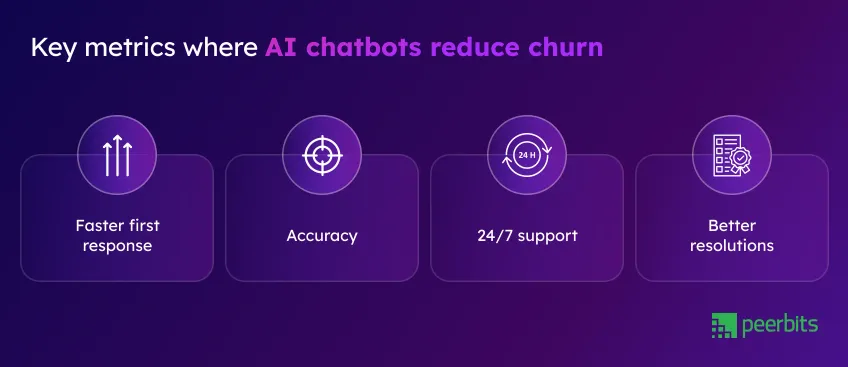
Key metrics that get impacted
-
Faster first response: AI chatbots drastically cut down the time it takes to respond to incoming queries. A customer who gets an answer within seconds is far more likely to stay engaged and satisfied. This speed helps reduce wait-time frustration, especially during peak hours.
-
Accuracy: When bots are trained on company-specific data and connected to backend systems, they provide accurate, consistent answers. That accuracy limits miscommunication and lowers the number of tickets needing human escalation.
-
24/7 support: Customers today expect answers at any hour. AI chatbot support, available round the clock, ensures that no query gets ignored due to time zones or holidays. That consistent availability reduces abandonment and improves customer loyalty.
-
Better resolutions: By letting bots handle repetitive questions, your human agents are free to take on complex, high-emotion cases. This improves resolution quality and keeps your team from burning out over low-value interactions.
How AI chatbots drive impact across industries
- D2C: AI chatbots instantly resolve issues like returns, delivery tracking, and customer inquiries, leading to fewer returns and higher customer satisfaction.
- Fintech: AI chatbots handle tasks such as KYC (Know Your Customer), loan status updates, and account-related queries automatically, offering faster service while reducing operational costs.
- Logistics: Real-time tracking and delivery updates via chatbots reduce the number of calls to customer service, improving operational efficiency and reducing customer frustration.
- E-commerce: AI chatbots assist with inventory updates, order status, product recommendations, and cart recovery, helping businesses engage customers more effectively and boost conversions.
- Healthcare: Chatbots can help schedule appointments, provide prescription refills, answer common health queries, and even track patient data, offering 24/7 assistance and improving patient experience.
Read more: Impact of Artificial Intelligence on everyday life
- Telecommunications: AI chatbots assist customers with troubleshooting, billing inquiries, service outages, and plan changes, providing quick solutions and reducing call center volume.
- Education: Chatbots provide personalized student support, handle admissions queries, guide through course material, and answer common questions, allowing institutions to scale communication efficiently.
- Travel and hospitality: AI chatbots can handle bookings, flight status, hotel reservations, and customer service issues, providing seamless support and reducing strain on human agents.
- Retail: AI chatbots help customers track deliveries, manage returns, find product information, and assist with loyalty programs, boosting customer engagement and retention.
Best practices for integrating AI chatbots with human support
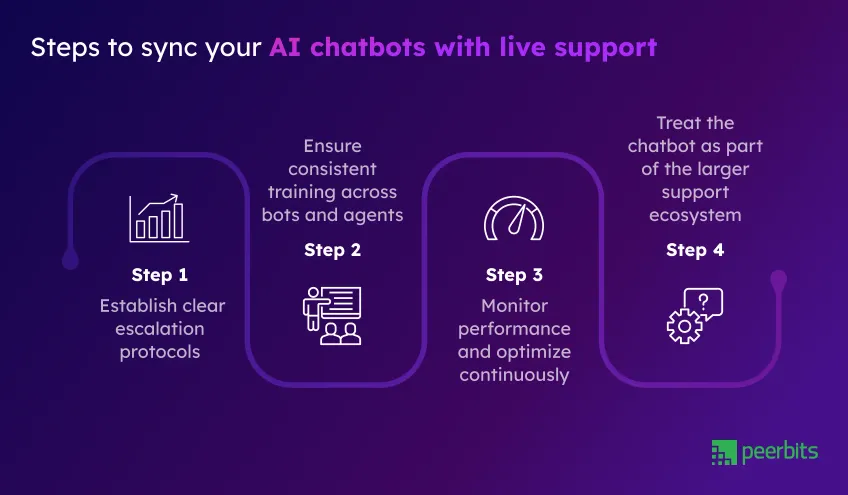
Integrating AI chatbots with human support is key to balancing automation with personalized care. By working with AI development services, businesses can create seamless systems where bots and human agents work together efficiently.
1. Establish clear escalation protocols
- Define which queries should be escalated and under what circumstances.
- Set thresholds based on sentiment analysis, keywords, and query complexity.
- Make sure the escalation process is seamless, so customers don’t feel a sudden shift when interacting with human agents.
2. Ensure consistent training across bots and agents
- Develop a shared knowledge base to ensure both bots and agents have access to the same information.
- Use bot-to-agent handoff data to enhance the performance of both systems.
- Continuously refine both agent and bot responses to match customer expectations.
3. Monitor performance and optimize continuously
- Track where bots fail and why, using insights to improve future interactions.
- Regularly update natural language processing (NLP) models and dialogue flows.
- Analyze performance metrics to identify common issues and fine-tune your chatbot's behavior over time.
4. Treat the chatbot as part of the larger support ecosystem
- Integrate your chatbot seamlessly with CRM, ticketing systems, and analytics platforms.
- Create a unified experience for customers, ensuring they don’t feel a disruption when switching between bots and agents.
- Encourage collaboration between human agents and chatbots to enhance service delivery and minimize operational silos.

Common mistakes to avoid when implementing chatbots
Many companies rush chatbot rollouts without aligning them with real business workflows. These slip-ups often lead to what most teams experience as AI chatbot challenges, slowing down adoption and hurting user trust.
1. Mistaking a chatbot builder for a complete solution
- No backend integration limits the ability to provide real-time data, making the chatbot ineffective.
- Unable to handle dynamic or complex queries without tailored code logic, leading to customer dissatisfaction.
2. Using generic bot scripts
- Mismatched tone and irrelevant responses may confuse users or create frustration.
- Lack of personalization in replies makes interactions feel robotic, reducing customer satisfaction.
3. No escalation or fallback logic
- Dead-ends without clear hand-off processes frustrate users and prompt them to leave negative reviews.
- Without fallback options, customers feel abandoned, which increases the risk of churn.
4. Ignoring feedback and performance data
- Failing to track bot interactions prevents you from identifying weak spots and making improvements.
- Without regular performance analysis, your bot will repeat the same mistakes, leading to user frustration.
Read more: 10 Major AI Chatbot Implementation Challenges & their Fixes
Human agents vs. AI chatbots
The debate isn’t black and white. Human agents bring emotional depth, while AI chatbots bring speed and consistency. To understand how they differ, here’s a quick side-by-side view.
| Feature / Ability | Human agents | AI chatbots |
|---|---|---|
| Handling volume | Limited to team size | Scales automatically |
| Emotional understanding | High, can manage tone and nuance | Limited emotional intelligence |
| Accuracy | Strong with context | Strong with structured, predictable queries |
| Consistency | Varies by agent | Always consistent responses |
| Learning & improvement | Requires training | Improves via NLP and past interactions |
| Cost | Higher (salaries, training) | Lower per query once implemented |
| Best suited for | Escalations, sensitive conversations | FAQs, tracking, order info, general queries |
And then comes the hybrid
This is where things get interesting. The third and often most effective option is hybrid customer support, blends the strengths of both.
Why hybrid is the winning model?
- Bots reduce noise by filtering out repetitive or routine queries
- Humans step in for emotional, complex, or rare edge cases
- Together, they reduce churn while maintaining strong customer experiences
What should businesses ask before investing in chatbot systems?
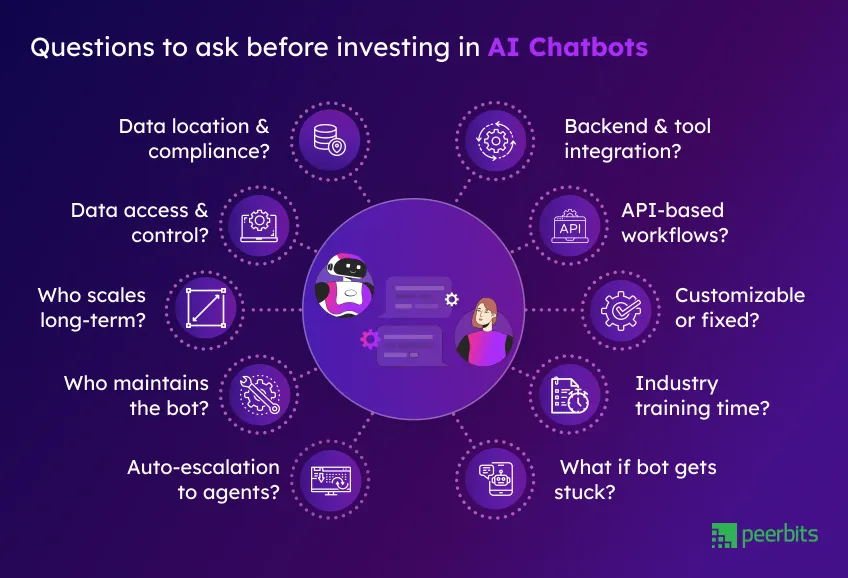
Before picking a chatbot platform, it’s not just about the features. Ask the right questions up front to avoid future headaches and focus on measuring ROI of chatbot from day one, not just post-launch.
Integration and compatibility
Q: Can the bot talk to your backend, CRM, ERP, and support tools?
Yes, modern AI chatbots are built to integrate with tools like CRMs, ERPs, and support platforms. This is key for enabling real-time responses and personalized replies.
Q: Does it support API-based integration for custom workflows?
Absolutely. Custom APIs make it possible to connect bots to internal systems for actions like order tracking, ticket updates, and customer verification.
Time-to-deploy and training
Q: Is the system customizable or strictly out-of-the-box?
Most reliable chatbot platforms offer both, templates for quick setups and customization for business-specific needs.
Q: How long will it take to train on industry-specific terms?
With access to previous chat logs or FAQs, bots can be trained in a few weeks. Some verticals like fintech or logistics may need deeper domain tuning.
Bot failure handling
Q: What happens when the bot is unsure or stuck?
A good system detects confidence drops or sentiment shifts and auto-escalates to human support before the user gets frustrated.
Q: Can it trigger automatic escalation or fallback to a live agent?
Yes, escalation paths are part of bot logic, ensuring there are no dead ends in customer support flows.
Post-deployment ownership
Q: Who handles continuous training and updates?
AI chatbot development services typically include handover, but long-term tuning is often a shared task between in-house teams and tech partners.
Q: Will internal teams or the vendor manage long-term scaling?
Depends on the contract. But most teams prefer internal control with vendor support for upgrades or major feature changes.
Data privacy and ownership
Q: Do you have full control over customer conversations and logs?
Yes, if you choose the right provider. Always confirm that the data is stored securely and that your team can access, export, or delete it when needed.
Q: Where is data stored, and is it compliant with your industry needs?
Storage locations should be discussed upfront. Fintech, healthcare, and global platforms must ensure GDPR, HIPAA, or relevant compliance.
When should you shift from human-led to AI-assisted support?
Before jumping fully into automation, know this, the real win lies in balance. With the help of AI consulting services, companies can map out what to automate, what to keep human, and how to create a support system that doesn’t break under pressure. It’s not about swapping people with bots. It’s about building something smarter.
Shift to collaboration, not elimination
- Start with AI handling repetitive and time-consuming queries
- Let your agents focus on emotional, layered, or high-stakes conversations
- Smart delegation improves both agent performance and customer satisfaction
How AI chatbot helps reduce churn
- Churn drops when your human agents are used where they add real value
- Bots reduce fatigue by handling the noise, leaving agents to solve problems that truly matter
Conclusion
AI chatbots vs human agents is not just a comparison to consider which one is better, for business it is a decision about how your customer support system should operate.
AI handles scale, speed, and consistency. Humans step in where judgment and empathy matter. The smartest teams don’t pick one, they design systems where both work in sync.
With the right AI chatbot support in place, you reduce wait times, improve resolution rates, and give your agents more time to focus on complex cases. This balance is what drives long-term satisfaction and lowers churn.
If your current setup isn't hitting the mark, or you're planning something new, consider how AI in customer service can help you move faster without losing the human touch.



